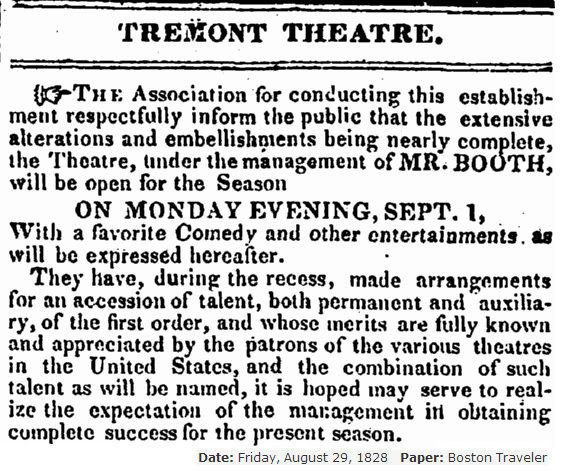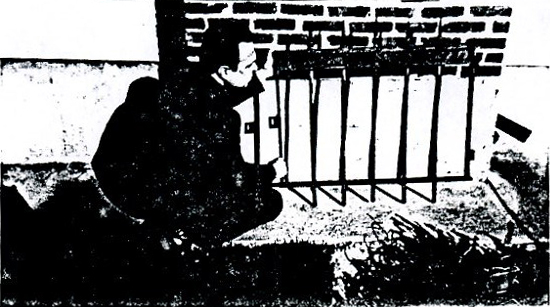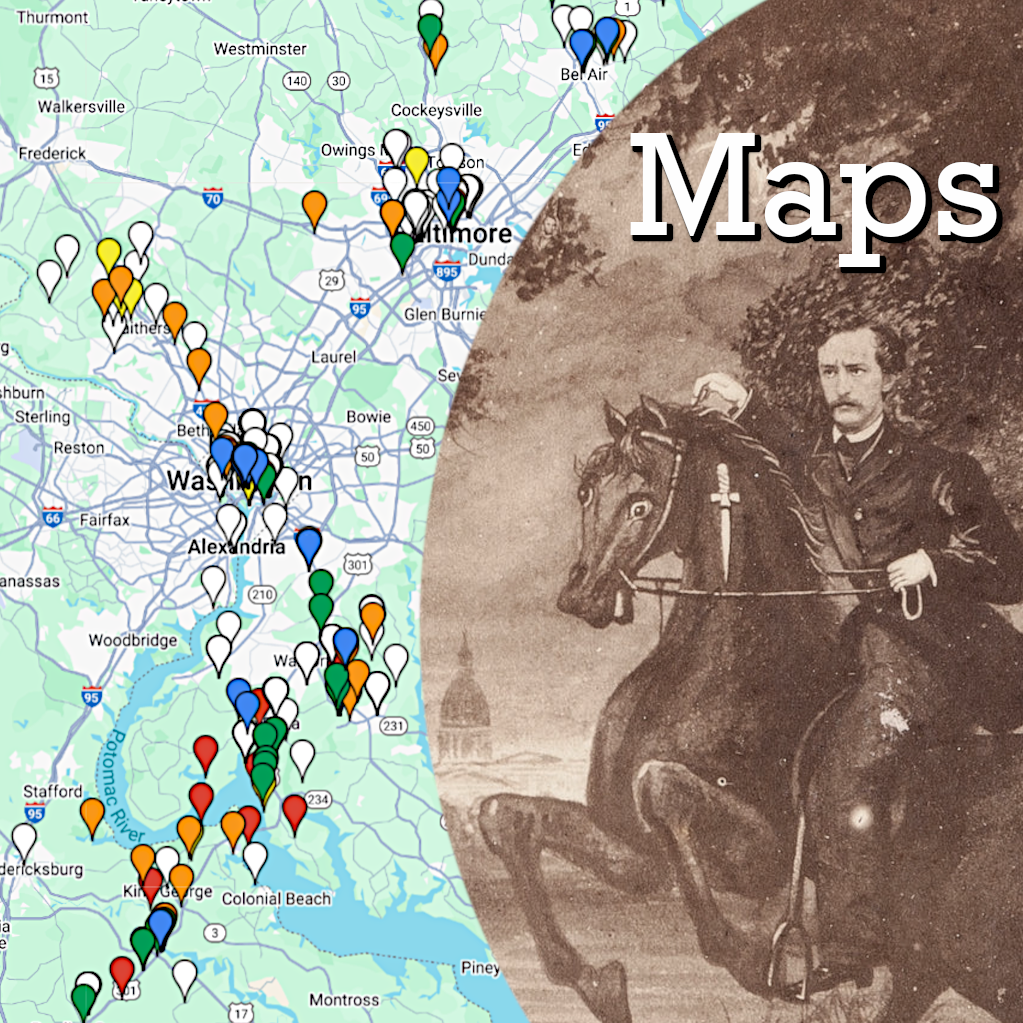In his later years, Edwin Booth would reflect, “What big families they used to raise!” when discussing his brothers and sisters. The world famous tragedian was one of ten children. Today, these siblings are generally eclipsed by their infamous brother John Wilkes, but, as this blog has often shown, each member of the Booth clan led fascinating lives of their own. Junius, Jr. was a moderately successful actor and theater manager. Henry Byron, who died at the age of 11 in England, was his father’s favorite. Edwin is easily considered the best actor of his generation and perhaps the best Hamlet ever. Asia thoroughly documented the lives of her father and brothers through books. Young Joe became a doctor. Even Rosalie, the Booth I had dubbed the “forgotten” one, lived a devoted life caring for her siblings and mother.
In truth, the only forgotten Booths seem to be the ones who died quite young. They are Mary Ann, Frederick, and Elizabeth. So little is known about these three Booths because their lives were so short. The small blurb they receive in books (if they are even mentioned at all) recounts their deaths from a cholera epidemic on the family farm in 1833 and the difficulty Junius Brutus Booth had accepting their loss. A multitude of questionable newspaper accounts and later recollections paint a picture of a crazed Junius, unable to accept the death of his children, digging up the bodies of one or more of them from the family cemetery, hoping to revive them. While there is some truth in these accounts the majority are dramatic exaggeration.
However, there is one mistake that has been accidentally perpetuated in books about these Booths for years. Only two of the Booth children died of cholera in 1833. These poor victims were Mary Ann and Elizabeth. Their brother, Frederick, had actually died a few years earlier away from the family farm.
In fall of 1828, thirty-two year old Junius Brutus Booth, Sr. decided to try his hand at being a theater manager. He rented the Tremont Theatre in Boston and began preparations to open for the season.
In Stephen Archer’s book, Junius Brutus Booth: Theatrical Prometheus, he proposes that with this managerial position, “the touring tragedian seemed to be trying to find a place to settle down.” As a touring star, Junius was often away from his wife and five children. They lived on the family farm in Harford County, and he could only make brief stops home when he was performing in Baltimore or during the summer break between theatrical seasons. It appears the Junius was hoping this managerial position would not only provide for his family, but also allow him to stay in one place for a prolonged period. His “wife” Mary Ann actually joined him in Boston during this time. Whether she brought all of their children with her to Boston, or left some of them at the Bel Air farm, is unknown. At the very least, it is known that Frederick, a little bit older than a year at that point, was with his parents in Boston.
It was during this point, when Junius was the manager of the Tremont Theatre, that Mary Ann may have made her acting debut. Theater lore states that Mary Ann Booth did try her hand at acting for a very brief period of time. The problem is that there has been little evidence found to support this idea. The small evidence we do have is this advertisement:
Dr. Archer calls it a “mystery” but states that we can’t be certain this is our “Mrs. Booth”. Actors and actresses were commonly referred to only by their surnames as you can see in the advertisement above. Dr. Archer also points out that “later appearances of a Mrs. Booth further suggest someone other than the tragedian’s wife.” However, in an article written for the Surratt Courier in 1991, John Wilkes Booth biographer Terry Alford seems to believe that this was our Mrs. Booth. A clipping of this advertisement can be found in a scrapbook that was owned by Junius Brutus Booth, Jr. Why else, Dr. Alford suggests, would June preserve a clipping of this advertisement unless it was of his mother?
After some searching, I found a newspaper advertisement which claims to be Mrs. Booth’s first appearance on stage:
If this is Mary Ann Booth, then her first performance was not at the Tremont Theatre in Boston but at the Salem Theatre in nearby Salem, Massachusetts. Salem and Boston are only separated by about 16 miles. James H. Caldwell, the actor for whom both these benefits were for was well known to Booth. In fact, earlier in 1828 Junius acted for over a month at the American Theatre in New Orleans where Caldwell was the manager. It seems possible that Mary Ann Booth knew the part of Rosalie Somers in the play Town and Country and Junius asked his friend Caldwell if she could play it alongside him. Caldwell was looking to make as much money as he could in Boston, as he was hoping to build a new theater in St. Louis. One Boston newspaper, the Boston Traveler, had a strong allegiance to the Tremont Theatre and partly chastised Caldwell for making his first appearance in the city at the rival Federal Street Theatre. They wrote, “The old house offered him $100 a night, and he chose to go there for money, rather than appear at the Tremont for money and applause.” Caldwell responded back to them humorously: “He informs us of his benefit, and gives us liberty, for one dollar, to speak of him as we like – provided we set down nothing in malice.” After finishing three nights in Salem, it was announced that Caldwell was coming back to Boston and that this time he would perform at the Tremont instead of the Federal Street Theatre. The Boston Traveler praised his choice and, as a last jab at the rival theater, stated, “He will now have an opportunity of appearing before such an audience as he has not yet seen in Boston.” With this in mind, it’s likely that Caldwell would have welcomed Mrs. Booth’s company on stage as she might have proved a curiosity and drawn a larger crowd to his benefits.
Additionally, when it comes to Mrs. Booth’s appearance on the Tremont stage, she might have been acting at the insistence of her manager husband. Mrs. Mary Ann Duff was a leading lady of the day and was scheduled to appear at the Tremont starting on October 15th. However, she fell ill and did not make her debut until October 29th. Perhaps, Junius, needing someone to play Rosalie Somers in Town and Country asked his wife to fill in. Her first performance at the far smaller Salem Theatre could have been her “try-out” before Booth had her play the same role the next day at his theater. This, of course, is just a theory. Mary Ann Booth’s supposed theatrical career is still a mystery.
Junius Brutus Booth departed the Tremont Theatre at the end of October after managing it for two months. The Tremont Theatre Association presented him with a silver cup and plate valued at $100 as a token of their esteem. For some time after Junius left to act in New York, Mary Ann and at least little Frederick were still residing in Boston.
Then, on November 5th, 1828, Mary Ann Booth lost her first child. The exact circumstances of Frederick’s death are not known. Thus far, no mention of the boy’s death has been found in the newspapers. His death record states he was 1 year, 4 months old but no cause of death is given.
His body was taken to the South Burying Ground in Boston. The grounds have been described as, “a working man’s burying ground, where families paid a small fee to the City for burials”. More research is being conducted to determine the exact disposition of Frederick’s body, i.e. whether he was buried or placed in a vault. Nevertheless, the loss of their child must have affected Mary Ann and Junius deeply. This was the second child Junius had lost. The first had been a daughter, Amelia Portia, who he had with his first wife, Adelaide. She too had died as an infant. Young mother Mary Ann, experiencing the first of her many losses, was likely beside herself with grief over her dead son.
Frederick’s death record proves that he was not one of the victims of the 1833 cholera epidemic as was previously thought. It also corrects his birth date which was thought to have been 1829. It can now be accurately determined that Frederick Booth was born between June 6th and July 5th, 1827 and that he died on November 5th, 1828 in Boston.
In 1869, after John Wilkes Booth’s body was released by the federal government, Edwin Booth bought a family plot at Baltimore’s Green Mount Cemetery. Here he placed the remains of his grandfather Richard, his father Junius, and his brother John Wilkes. Edwin also had the bodies of his three young siblings who had died in America exhumed from the family cemetery at Tudor Hall. These were the bodies of Mary Ann, Elizabeth, and little Frederick. The touching story of how Frederick came “home” is recounted by his older sister Asia Booth:
“During the engagement in Boston, their infant child Frederick had died, and Mrs. Booth was lamenting the loss (on her return to the country home at Belair) and burial of her baby so far away. Her husband said, “Do you wish the child to be buried here?” “Oh it would cost so much,” hesitatingly answered the grateful mother. “Come out and walk with me,” her husband rejoined. Mrs. Booth thought this a feint to distract her mind from grief, and they strolled about together, then, directing his steps towards the Barn, Mr. Booth said tenderly, “I have brought your child home.” She was not shocked then, when on entering the Barn, he took the straw from a box in the corner, on which rested the leaden cover containing the little coffin. Mrs. Booth, relating this occurrence, remarked on the thoughtful tenderness of keeping this unknown to her, also the deep parental love of the father for so young a child.”
The reason the truth about Frederick’s death was unknown until now is because this passage from Asia Booth Clarke’s book, The Elder and Younger Booth is only located in one copy of her book. At the University of Illinois in their Rare Book room there is a copy of Asia’s book inscribed, “To my dear son Wilfrid Booth Clarke, Oct. 29th, 1885, from his mother, Asia Booth Clarke”. This copy of her book is different from all the other. It has extra pages and notations inside of it which are assumed to have been either material that was edited out of the original or Asia’s suggestions for a second edition that never came to pass. This passage about Frederick’s death is on one of these extra pages in this one, unique book.
The death of Frederick and the desire to have him buried at the family farm necessitated a family graveyard.
“…a little graveyard was railed in, where the Jewish althea bushes had their places among the yews and weeping-willows. In country homesteads these private graveyards are common, and the duty of reading the burial service devolves upon the master of the house when it is impracticable to obtain a clergyman. Mr. Booth was often called upon to officiate at the interment of members of his household here (the blacks being buried outside the rails).”
Mary Ann and Elizabeth were also buried in this graveyard after their deaths from cholera in February of 1833. Another extra page from Asia’s personal copy of her book recounts Junius’ actions after the death of the first child from cholera.
“…[Junius] dug up the little grave at night and secreted the child’s coffin, while he wandered about silent and despondent. Joe [Hall, their slave] for a day and a night searched over the farm and miles of country, with dogs and lantern, for the hidden coffin, and with heavy heart was returning to tell to the poor mother his failure when the dogs led him to some thickly-platted bushes quite near the house. The child was re-buried, and the wretched father taken care of.”
Far more dramatic accounts emerged over the years exaggerating this occurrence to degrees fitting the public perception of the mad Junius Brutus Booth.
The Booths installed a metal gate at the entrance to the family graveyard. When author Stanley Kimmel visited the Bel Air region to research his book, The Mad Booths of Maryland, he discovered that a neighbor had salvaged the gate after the Booth family sold the farm in the 1870’s and that the gate had been in that family’s possession ever since. Stanley Kimmel purchased the gate around the 1930’s but its location today is unknown.
Frederick, Mary Ann and Elizabeth Booth never knew their four youngest siblings. They never got to share in the success and fame of their brother Edwin, nor did they have to endure the tragedy and pain caused by John Wilkes. When the trio was disinterred from the family graveyard at Tudor Hall in 1869, their small remains were placed together in one coffin. At the Booth family plot at Green Mount Cemetery these three innocent Booths were buried right on top of their guilty brother. When the misguided conspiracy theorists attempted to exhume John Wilkes Booth in the 1990’s, one of the reasons why Green Mount Cemetery blocked the exhumation was due to the fact that such a procedure would disturb the remains of these three Booths as well. So, even though Frederick, Mary Ann and Elizabeth never knew their brother John Wilkes, even in death they managed to protect their little brother.
References:
Junius Brutus Booth: Theatrical Prometheus by Stephen Archer
The Elder and Younger Booth by Asia Booth Clarke
Author’s copy of the Elder and Younger Booth by Asia Booth Clarke held by the University of Illinois
Mary Ann Booth – Actress? by Terry Alford, Surratt Courier, May 1991
Joseph and Ann Hall: Behind the Scenes at Tudor Hall by Dianh Faber, Harford Historical Bulletin, Fall 2006
The Mad Booths of Maryland by Stanley Kimmel
Behind the Scenes with Edwin Booth by Katherine Goodale
Mrs. Duff by Joseph Norton Ireland
South End Burying Ground
Newspaper articles are from GenealogyBank.com
Ancestry.com
The Art Loux Archive
New Picture Galleries have been created for the “forgotten” Booth children: Rosalie, Henry Byron, Mary Ann, Fredrick, and Elizabeth Booth. Click HERE to visit Rosalie’s Gallery or HERE to visit a combined gallery for the other Booth children. You can also click their names on the image below to visit their respective gallery.

















Great story Dave! Keep filling in the gaps.
Why is there an asterisk beside Mary Ann’s date of birth? Were she and Frederick really both born in the same year?
Karen,
The asterisks beside the birth years for Mary Ann and Elizabeth Booth show that those birth years are still unverified. We know from the 1830 Census record that Mary Ann was born before 1830 and that Elizabeth was born after. However, the only source that I know of for these birth years is Stanley Kimmel’s book, The Mad Booths of Maryland. Kimmel did not cite where he got his information from regarding these dates. I will also note that Kimmel was incorrect in regards to Frederick’s birth and death years. However, without any other evidence regarding the birth of Mary Ann and Elizabeth we will use Kimmel’s dates for now.
According to my friend’s Suzie Nash’s Booth family tree on her Ancestry.com page, she has Mary Ann listed as being born in 1827 (citing 1830 US Federal Census), Frederick born in 1830, Elizabeth born in 1832. Unfortunately, she didn’t list a source for Frederick and Elizabeth for the birth info.
The 1830 Census did not give exact ages for the people numerated. Instead it gave categories like “Female under 5 years of age” or “Male between 50 and 65 years of age”. The census doesn’t even give names of anyone other than the head of the household. We can deduce Mary Ann is there “Female under 5 years of age” but this doesn’t give us her exact birth year. Elizabeth is not numerated on the census and so was born after 1830. I know the Frederick dates above are correct due to his death record. The 1830 date was given by Kimmel and is incorrect since Frederick died in 1828.
Do we at least know for sure that Mary Ann was older than Frederick?
Is Frederick listed in the 1830 census?
Frederick Booth is not enumerated in the 1830 census as he had died in 1828. The 1830 census only listed the head of household (in our case Junius Sr.) and then a checklist of persons of different age ranges living there. All the living Booths are accounted for in that enumeration, demonstrating that Frederick was indeed dead by 1830.
hi there’ I have achieved Junius b booth’s pool table from the masconomo house and I was wondering if you knew anyone I could speak with about it.
Cody,
What an interesting artifact to have come across. I know that the folks at the Manchester-By-The-Sea historical society have a key from the hotel as well as some documents relating to it. They might have more information for you.
Dave